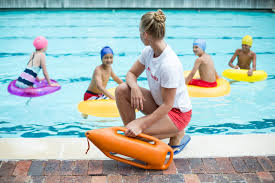Aquatic centers have provided a haven for teens for many years. Aquatic facilities provide a venue for fun, activity and socializing, which creates an atmosphere for both opportunity and autonomy. Pools and water parks with access to water, lanes and friends are also venues for teens, whether they are jumping off the diving board into the water, racing down the lanes or hanging out. While there is certainly a safety concern in this cohort, both the help desk staff and parents need to be careful to not allow an unsafe environment to develop, this is a natural part of youth taking risks as they mature.
Conventional standards of development, behavior, social dynamics, and environmental contexts contribute to an aquatic facility being an overloaded risk scenario for young people.
Skill Disconnect and Overconfidence
Overconfidence is among the most often encountered problems among teen swimmers. Many teenagers believe they are excellent swimmers, depending on experience or casual instruction, but recreational swimming is quite different from negotiating crises or handling water fatigue. A flash of tiredness or disorientation in a congested pool can become a deadly circumstance.
This is why ALU lifeguard courses programs emphasize the importance of evaluating swimmer ability and maintaining constant surveillance. Staff members are given the ability to early identify signs of distress thanks to lifeguard certification, therefore guaranteeing that fast and successful action can be taken before a crisis goes out of hand. Teenagers who are urged to get official swim assessments and attend swimming courses could also help to reduce the hazards linked with misplaced confidence.
Group Behavior and Peer Influence
Adolescents often go in groups to aquatic facilities. Although this encourages social bonding and comradeship, it can also cause groupthink—where people behave in ways they would not usually act on their own. Group behavior can cause crowding, competitive activities pushing limits, and a general rise in energy and motion, so providing lifeguards with more variables to watch.
Trainees in lifeguard courses learn to spot group behavioral patterns and project possible risks. Teens splashing about the pool deck, having splash battles, or taking over a diving board site can soon pose a safety issue. Facilities must be appropriately staffed with trained people who can effectively control group dynamics and consistently apply safety regulations.
Effect of Substance Use
Regrettably, teens still use substances extensively in recreational settings, including water facilities. Alcohol and recreational drugs impede judgment, coordination, and reaction time—attributes essential for safe swimming. Though most institutions forbid alcohol, some teenagers could try to bring it inside or appear under the influence.
Lifeguards trained in recognition methods through lifeguard certification programs are better able to spot symptoms of intoxication and act accordingly. Removing a swimmer from the water, reporting to facility management, or calling emergency services could all fall under this. Maintaining a safe area for all visitors depends on building a zero-tolerance culture toward drug usage around aquatic settings.
Teen Safety: The Part of Lifeguard Training
Good lifeguard training is the foundation of any underwater safety plan. Trained first responders able to manage crises, uphold regulations, and instruct the public, lifeguards are more than just attentive eyes. Certification for lifeguards guarantees that personnel know rescue methods, CPR, AED use, and water surveillance.
Advanced lifeguard courses offer tailored instruction for facilities serving sizable teen populations on dealing with teenage-specific issues, including conflict defusing and high-energy behavior management. Lifeguards who know adolescent psychology are more adept at applying regulations in a courteous but firm way.
Continuous training is also rather important. Refresher seminars, simulations, and current certifications help lifeguards stay sharp and ready for changing dangers. Facilities should give professional development top priority and offer guards rewards for seeking more qualifications. This not only increases staff morale and retention but also enhances safety results.

